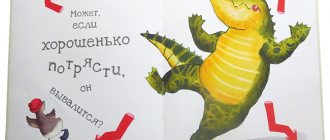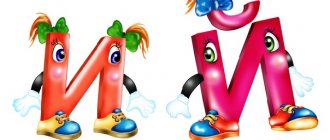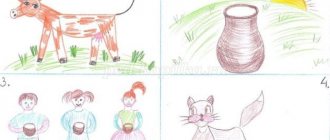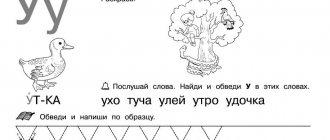Methodology for teaching sound analysis of words to children of senior preschool age. - presentation
Methodology for teaching sound analysis of words to children of senior preschool age
Contents: Didactic material Didactic material. Methodical teaching techniques Methodical teaching techniques. Introducing vowel sounds. Introducing consonant sounds. (hard and soft)Introduction to consonant sounds. Working with the sound circuit. Consolidating the skill of sound analysis of words Consolidating the skill of sound analysis of words.
Contents: (cont.) Introducing the impact sound Introducing the impact sound. Game exercises Game exercises. Literature Literature. Check yourself Check yourself.
Sound analysis of a word means determining the order of sounds in a word, establishing the distinctive role of sound, and the main qualitative characteristics of sound.
What methodological techniques make the process of teaching sound analysis attractive to a preschool child?
Didactic material Pictures with sound diagrams Handouts Demonstrations
Chips - sounds Demonstration Handouts 6 cm. 10 cm Set for each child 2 cm 2 cm. 4 of each color (black -1)
Sound cards Demonstration Handouts 40 cm. 15 cm. 2.5 cm 2.5 cm.
Subject pictures
Methodological teaching techniques The teacher pronounces words with intoned emphasis on the first sound. Children, following the teacher, pronounce the word in the same way, moving their pointers along their patterns and holding the pointers on the pronounced sound. Places a gray chip in the first cell. The teacher names the first sound, as it is heard in the word.
Determining the sequence of sounds in a word You need to identify the sequence of sounds by repeatedly pronouncing the word with sequential intonation of each sound. RRRAK RAAAK RA K
Representing a word in the form of a model A picture-scheme of its sound composition makes it possible to really imagine a word. A drawing-object is placed on it, under which there are a number of cells that are sequentially filled with chips (first gray, then colored). The number of cells corresponds to the number of sounds in the word.
Acquaintance with vowel sounds Sounds during the formation of which air passes freely (nothing “interferes” with it - neither lips, nor teeth, nor tongue) are called vowels. Children find such sounds in the three sound words analyzed previously.
Sound analysis of the word BOW When determining the vowel sound, lay out a red chip. Children learn that there are 6 vowel sounds in the Russian language [a] [o] [e] [i] [s] Children, with the help of a teacher, “check” all the sounds by pronouncing them and observe whether anything in their mouth is bothering them their pronunciation. [y]
Introducing consonant sounds (hard and soft) The hard consonant sound “big brother” is indicated by a blue chip. The soft consonant sound “little brother” is indicated by a green chip. Sounds during the formation of which air does not pass freely and encounters obstacles are called consonants
Sound analysis of the word MOON How many sounds are in the word MOON? 4 How did you know? Four cells under the picture. Pronounce the word so that the first sound is clearly heard. When we pronounce it, our tongue gets in the way. L is a hard consonant sound, denoted by a blue chip.
Familiarization with soft consonant sounds Sound analysis of the word FOX Pronounce the word so that the first sound is clearly heard. LLLISA Sound L - “big or little brother”? Small. The sound Ль is a soft consonant sound, we denote it with a green chip. Next, the word is analyzed by analogy.
Working with the sound chart Children read the word by pointing under the sound card, recording each sound. According to the instructions, sound chips are removed. Remove the sound Къ Remove the first sound, call it -НН Remove the hard consonant sound. Remove the first vowel sound, call it - And Remove the second sound And
Strengthening the skill of sound analysis of words
Sound analysis of the word YULA Extend the first sound in the complete word. Name the first sound in the word. What is he like? What kind of chip do we denote? Name the second sound in the word. What is he like? What kind of chip do we denote? Name the third sound in the word. What is he like? What kind of chip do we denote? Name the fourth sound in the word. What is he like? What kind of chip do we denote? Read the entry.
Familiarization with the stressed sound Perform a sound analysis of the word GUSI Name the vowel sounds of How many syllables are in the word? Two Which? GUSI Name the stressed syllable GU Say the word with the accent GUUUSI and
In a stressed syllable, the vowel sound is pronounced protractedly. The teacher reads the word with emphasis synchronously moving the pointer under the diagram. Children repeat The teacher says GUSIIIIGUSIIII Which sound is highlighted? And How to say it correctly? GUUUSI The vowel sound in a stressed syllable is called stressed, which is pronounced more drawn out in the word. A stressed vowel sound is indicated by a black chip.
Game exercises Why did you decide this? 1 2 Match the diagrams to the pictures
Perform a sound analysis of the word BEETLE Change the diagram so that you get the word BEETLES Change the scheme
Perform a sound analysis of the word MOUSE Change the diagram so that you get the word BEAR
Match the words to the diagrams Vegetables, fruits
Literature: Teaching preschool children to read and write / L.E. Zhurova, N.S. Varentsova, N.V. Durova, L.N. Nevskaya / Ed. N.V. Durova.-M., 2001
Test yourself Which word does the diagram go to?
WRONG!
RIGHT!





